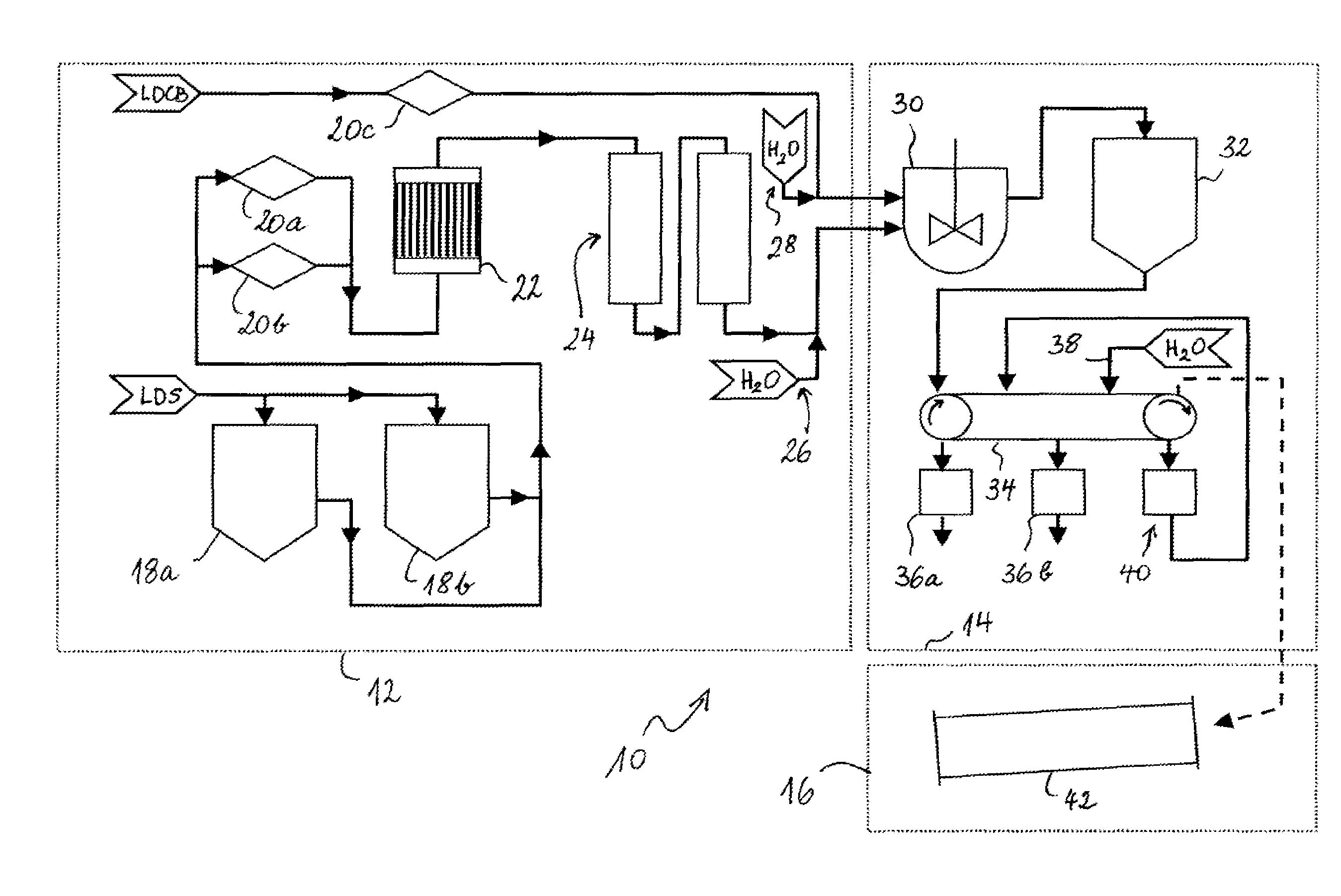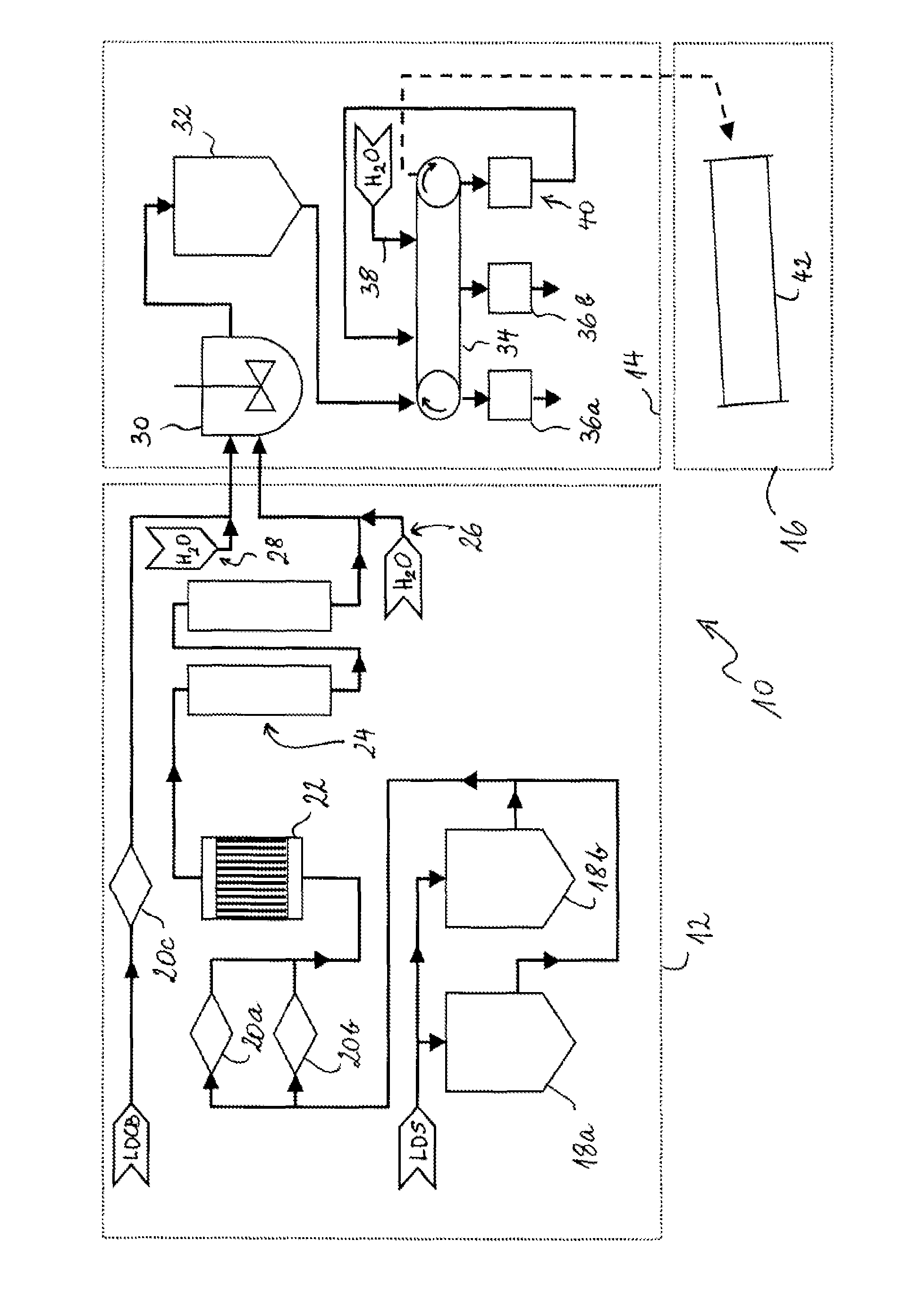High-purity calcium compounds
a high-purity, calcium compound technology, applied in the direction of magnesium compounds, silicon compounds, chemistry apparatuses and processes, etc., can solve the problems of difficult to find a calcium oxide source with sufficient phosphorus content to prepare calcium-silicate slag, and the main source of solar grade silicon cannot be used, so as to inhibit the co-precipitation of boron and less efficient
- Summary
- Abstract
- Description
- Claims
- Application Information
AI Technical Summary
Benefits of technology
Problems solved by technology
Method used
Image
Examples
example 1
[0058]Two m3 of an aqueous solution of sodium carbonate (in a concentration “Y” of 0.45 mol / l) is stirred at 50° C. (two stage blade mixer, 800 rpm) in a thermostatised agitated vessel (5 m3). Boron or phosphorus contents in this solution are below their respective quantification limit (ICP-OES). A stoechiometric amount of an aqueous calcium chloride solution (concentration “X” of 0.89 mol / l), which has also been thermodstatised to 50° C. is added to this stirred solution. The boron contents in this solution amounts 8.4 ppm (by weight) with respect to calcium content. The phosphorus contents in this solution is below the quantification limit (ICP-OES). The product X×Y is in this case 0.40 (i.e. 0.89×0.45). The addition is done over a period of 45 min, followed by additional 15 min of stirring. The resulting dispersion is passed over a band filter, the mother liquor is filtered off and the filter cake is washed with deionised water in a countercurrent process step (washing rate 8 wit...
example 2
[0059]One m3 of an aqueous solution of calcium chloride (in a concentration of 0.89 mol / l) is stirred at 40° C. (two stage blade mixer, 1000 rpm) in a thermostatised agitated vessel (5 m3). One m3 of deionised water is added thereto and the resulting concentration “X” is 0.445 mol / l. The boron contents in this solution is 8.4 ppm (by weight) with respect to calcium. A stoechiometric amount of solid sodium carbonate (Y=1) is dispersed within 5 minutes in the continuously stirred liquid phase. The product X×Y is in this case 0.445 (i.e. 0.445×1).The boron and phosphorus contents in the solid sodium carbonate are below their respective quantification limit (ICP-OES). The stirring is continued for 3 h. The resulting dispersion is passed over a band filter, the mother liquor is filtered off and the filter cake is washed with deionised water in a countercurrent process step (washing rate 10 with respect to the dry solids). The wet filter cake is dried in a drying chamber at 105° C.
[0060]T...
PUM
| Property | Measurement | Unit |
|---|---|---|
| temperature | aaaaa | aaaaa |
| temperatures | aaaaa | aaaaa |
| temperatures | aaaaa | aaaaa |
Abstract
Description
Claims
Application Information
 Login to View More
Login to View More - R&D
- Intellectual Property
- Life Sciences
- Materials
- Tech Scout
- Unparalleled Data Quality
- Higher Quality Content
- 60% Fewer Hallucinations
Browse by: Latest US Patents, China's latest patents, Technical Efficacy Thesaurus, Application Domain, Technology Topic, Popular Technical Reports.
© 2025 PatSnap. All rights reserved.Legal|Privacy policy|Modern Slavery Act Transparency Statement|Sitemap|About US| Contact US: help@patsnap.com


